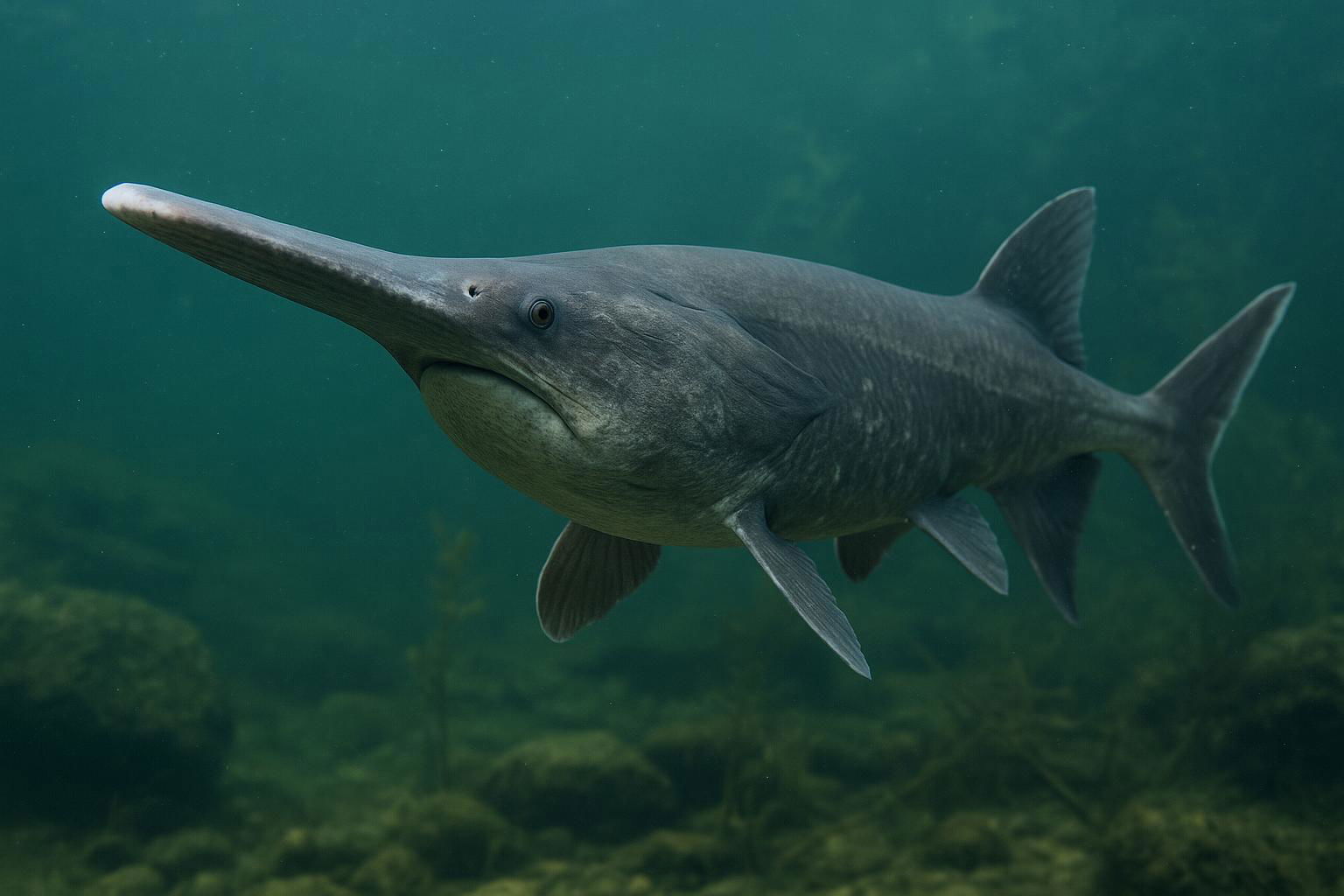
American Paddlefish
Polyodon spathula
The American Paddlefish (Polyodon spathula) is a distinctive freshwater fish native to the river systems of the Mississippi River Basin in the United States. Characterized by its long, flat, paddle-shaped snout, known as a rostrum, this prehistoric fish has an elongated body covered in smooth, scaleless skin. The rostrum, which can account for about one-third of the fish's total length, is equipped with electroreceptors, allowing the paddlefish to detect the weak electrical fields emitted by its planktonic prey.
Typically, adult American Paddlefish are slate gray or greenish, with lighter underbellies, and can reach lengths of up to 7 feet and weights exceeding 100 pounds. They are filter feeders, using their large mouths and specialized gill rakers to strain minute plants and animals from the water. Unlike most fish, they lack teeth and stomachs, relying exclusively on this method of feeding.
Primarily inhabiting slow-moving waters such as rivers, lakes, and reservoirs, American Paddlefish are known for their spring spawning runs that take them to the gravelly bottoms of rivers. Although once abundant, populations have faced significant decline due to overfishing, habitat loss, and river modifications such as damming, which obstructs spawning migrations. Conservation efforts, including fishing regulations and habitat restoration, are crucial for preserving this unique species, which has been around since the time of the dinosaurs.

 All Species & Breeds
All Species & Breeds
 Highland Cattle
Highland Cattle
 Miniature Donkeys
Miniature Donkeys
 All Species Directory
All Species Directory
 Highland Cattle in Virginia
Highland Cattle in Virginia
 Miniature Donkeys in Texas
Miniature Donkeys in Texas












